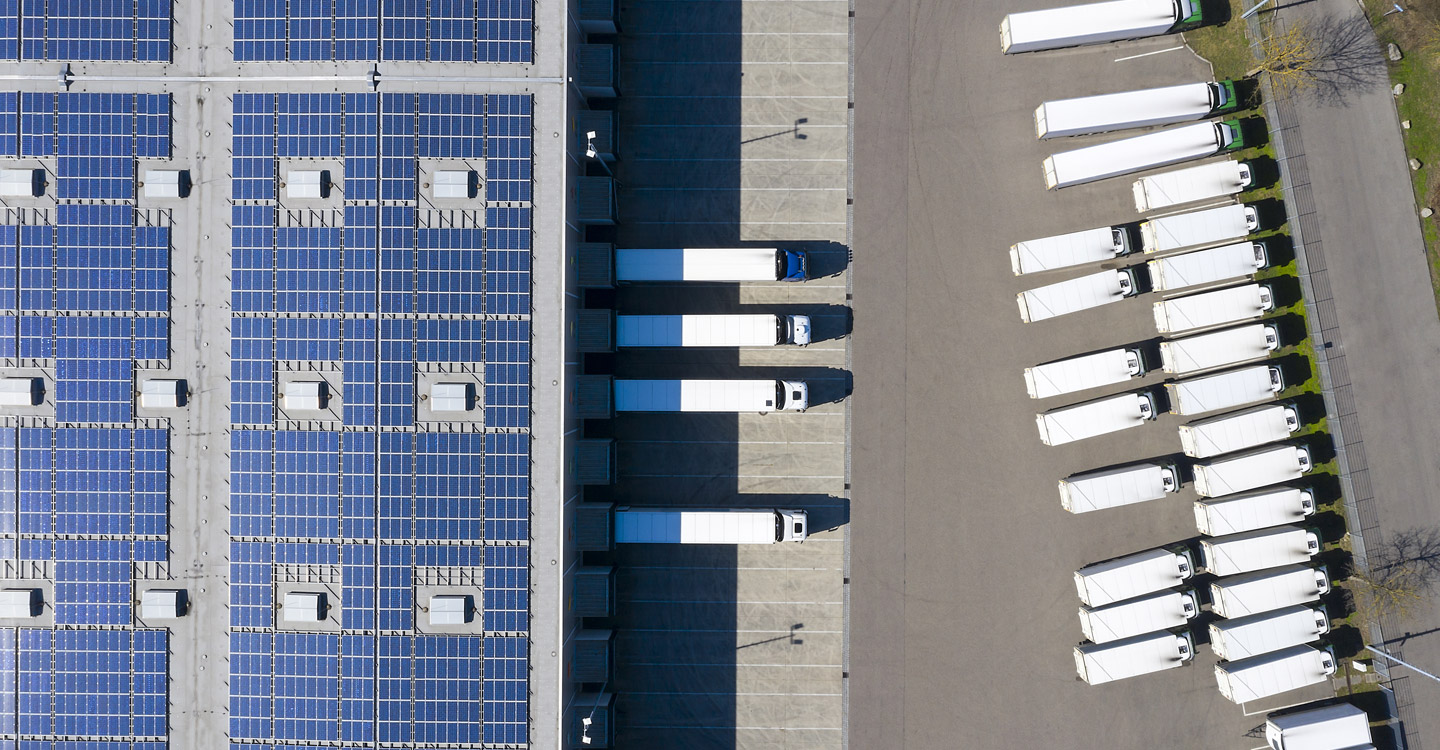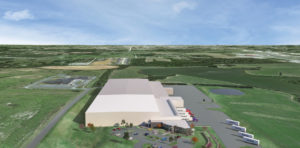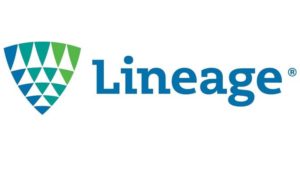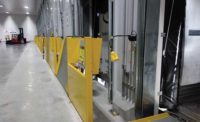One of the more anticipated tutorials in this series is on the subject of Built-to-Suits (BTS). The industrial real estate environment continues to be incredibly dynamic and ever evolving. To deal with the volatility of the current climate, companies are turning to third-party developers to take on some of the development risk and further insulate them from the whims of the real estate and capital market industries. Although not a new trend, it has historically been rare for cold storage providers and occupiers to use a developer for this purpose. Companies that have traditionally been resistant to not owning their own real estate are now seeing the value in shared risk and incentivized execution.
The following is intended to provide an overview of the more distinctive details of a built-to-suit transaction.
Step 1: How a Build-to-Suit (BTS) Project Works
In exchange for buying and entitling land, financing construction and handing over a custom-tailored solution for an occupier, the developer receives a long-term lease from the occupier, at a predetermined lease rate. The rent paid under such a lease can be determined in many ways, but the two most common methodologies are based on either a rent constant or a market rate. Comparing similar buildings that are under construction, delivered and/or leased nearby the subject development can help determine a prevailing market rate. The other method, using a rent constant, is a slightly more complicated but elegant solution that keeps the interests of both parties aligned. In its simplest form, the developer and occupier agree to a percentage (the rent constant) that will be applied to the overall project costs to determine the rent to be paid.
Example: If the total project cost (Hard, Soft and Land costs) is $50 million and the rent constant is 10%, then the yearly rent for the first year of occupancy will be $5 million. For a 250,000-square-foot building, this equals yearly rent of $20 per square foot.
To fully understand a built-to-suit, it is incumbent on the occupier to understand the incentives of the developer. The developer makes money in a few different ways. The first is a development fee. This fee is paid to the developer in exchange for their labor and expertise in constructing the building, typically paid once a project is funded. This fee is negotiable and is commonly included in the soft costs used in determining the total project costs, and also the rent, if using the rent-constant methodology. The developer also makes a return on the investment from distributions, originating from rent payments once the building is complete. There are a few other fees that the developer may also collect including leasing, asset and property management, but for the purposes of this tutorial, they do not typically impact the occupier’s economics. Finally, the developer makes money through a liquidity event: either from the sale of the project or from refinancing it. There are a number of factors influencing the valuation of the project for the purposes of the liquidity event, like the credit-worthiness of the occupier, the securitization of the lease (security deposit or guarantees) and the length of the lease.
To summarize, the developer lends their expertise and executional skill, while taking on risk, in exchange for receiving a guarantee of long-term cash flow that can also be sold. The developer is incentivized to deliver the building on time and on budget, aligning their goals with that of the occupier’s.

Step 2: Defining Your Cold Storage Needs
Before engaging with developers, it is critical for the occupier to define what they are looking for in a building. The greater the clarity the better. At a minimum, this process allows a food manufacturer/processor to compare their ideal conceptual building to existing facilities that may be available to lease or buy. If no such matches exist, then new development can indeed be the best option for moving forward.
When defining their requirements, the occupier needs to consider both physical and economic needs. On the physical side, it starts with location. Where does the building need to be? What roads or infrastructure does the business need access to? Are there regulatory constraints? Additionally, there is the subject of programming. At its best, programming can be a creative and fun exercise for the management and operations team to lay out their ideal building plan. At its worst, programming can prove to be a long and circuitous process. For this point in the transaction, full programming is not yet necessary. A high-level overview is enough to help understand how much land is needed to fit the required building. Further definition of the programming can be achieved later in the process once an architect is hired.

Would you like to be alerted when new Farm to Frozen articles are posted?
Sign up to receive our eNewsletter, What's HOT in COLD! This weekly eNewsletter showcases the latest trends, news technologies and products impacting the refrigerated, chilled and frozen segment. It also includes a notice when new Farm to Frozen content drops! Sign up now to get on the list!
On the economic side, the occupier should first consider their cost/benefit analysis of why this new building is even necessary. Reasons can range from transportation costs, energy efficiency, capacity, or operating constraints. After analyzing the new facility’s operating potential, the occupier should have at least a rough estimate of its capacity and budget for occupying costs. Occupying costs are not limited to just the rent, but also any combination of taxes, insurance, maintenance, energy/utilities and incidental repairs. Knowing this boundary allows for a more constructive conversation with future developer partners.
Step 3: Selecting a Developer
The first thing the occupier should understand is that they are the “belle of the ball,” meaning that the lease they sign as part of the built-to-suit transaction is highly coveted by the developer community. Particularly, for occupiers with strong balance sheets and financials. In uncertain economic times, developers shy away from speculative development. If they choose to remain active, all attention turns toward BTS developments. The reason is that unlike a speculative development, a lease-in-hand is a known return for the developer, reducing the risk of carrying a vacant building. For this reason, occupiers should feel relatively confident that they can have multiple developers competing for the project.
One thing to consider when choosing a developer is the required timeline for completing the building. The tighter the timeline (the sooner the building needs to be complete), the more important it will be to select a developer that already has land under control or can easily obtain land. If the timeline is more relaxed and the occupier is simply looking for the most comprehensive solution, it matters less that a developer already controls or owns land that would be appropriate for the subject development. That said, it is likely that developers who can contribute land they already own can do so at a price lower than if the developer is purchasing the land at a future date for the purposes of the project.
Another consideration is the developer’s executional ability and familiarity with the type of building. For example, if an occupier needs a mixed-temperature building for a kitting operation, with the majority of the building being ambient storage, and they decide to take on box-in-a-box tenant improvement on their own after building delivery, the occupier might be less concerned with the developer’s resume with refrigerated and frozen construction. On the other hand, if the occupier requires the developer to complete a very complicated and specialized fit-out, then it behooves the occupier to make sure the developer has a record of accomplishment of delivering buildings of that nature. There are intricate nuances that separate food logistics developers from run-of-the-mill ambient warehouse developers. The greater the complexity and temperature sensitivity, the more it pays to engage with only the most credible cold storage developers.
Intermission
As an occupier, you may be starting to realize that these built-to-suit transactions can be one of the more challenging solutions available to a cold storage occupier, but fear not. When done right, these deals can prove to be the most rewarding and beneficial to the occupier’s overall business objectives.
This concludes part one of two of the build-to-suit primer. We are starting to scratch beneath the surface of the built-to-suit tutorial, but there is still a lot to cover. In the next installment of Farm to Frozen, we’ll cover negotiating lease terms, designing the facility, and we’ll bring it home with construction and handover. Stay tuned for Part 2 and learn how to make the most of your partnership with a developer!








